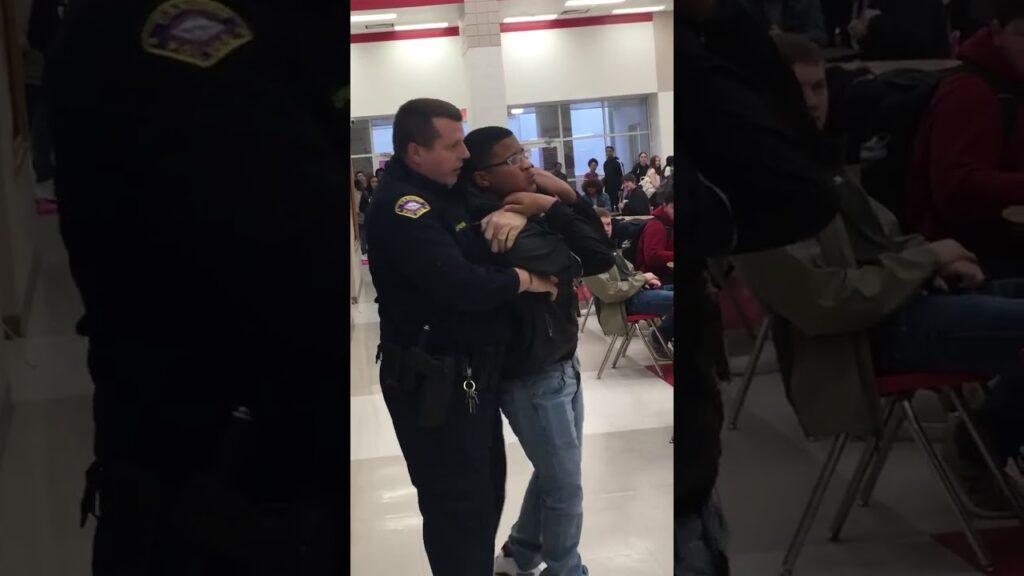With the job description of “handling situations involving fights, theft, criminal bullying, truancy, trespassers, psychiatric detentions, identification of gang members and school policy violations,” it is more apt to call a school resource officer (SRO) a rule enforcer.
In theory, SROs are supposed to benefit a school by making it a safer environment, but their presence too often intimidates and frightens students. The actual consequences of having SROs as a constant presence in high schools has too many downsides.
Instead of employing SROs, schools should look to hire additional staff that specialize in helping students with mental health issues. For students suffering from stress and anxiety, counselors can offer support that an SRO would not be able to. By having additional counselors, the environment on campuses would be safer overall.
Typically, SROs are utilized by schools dealing with violence, fighting, bullying or gang activity among students. The common belief when hiring a SRO is that by implementing someone trained to subdue criminal activity, juvenile crime would decrease on campus. However, this is not always the case.
These issues are most common in poor neighborhoods. The Chicago Lawyers Committee for Civil Rights survey (CLCCR) of SROs have shown that SROs have an overall negative effect on the student population: Arrests by SROs were shown to disproportionately target black and brown students, causing fear and anxiety in these groups to spike. More generally, critics say SROs contribute to more criminalization and arrests of students as well as an environment where students feel less safe and more vulnerable.
Another SRO duty is searching and confiscating drugs. While this may seem like an important responsibility, it actually comes with more costs than benefits. In order to search for illegal substances, overzealous SROs can ignore basic privacy rights, citing terms that allow them to bypass them. In a broad study of 19 anonymous high schools, an SRO was caught peeking into student cars, but was defended since his contract gave him permission to do so. Again, many of these searches excessively targeted black and brown students.
Combined with the many zero-tolerance policies schools implement, an SRO’s presence on campus can lead to a pipeline between high schools and juvenile detention. Students caught by the SRO for one offence would be severely punished, and may even face consequences in the criminal justice system. If students do end up in these situations, they may not receive the help they need to better themselves in the future, resulting in them continuing to seek the activity that got them in trouble in the first place.
Generally, a student population suffering from the effects of a SRO sees a decrease in productivity and academic performance. In particular, a case-study of African American students showed a significant drop in test scores when in the presence of an SRO. Faced with this fact, schools need to realize that hiring an SRO is not worth lowering their student’s quality of education.
These problems relating to SROs are not limited to the high school and middle school level either. In fact, there was even an instance at a special needs school in Statesville, N.C. of an SRO handcuffing a 7-year-old with autism, pressing him to the ground and taunting him. By ingraining fear and punishing children for disobedience at a young age, SROs are exposing them to emotional trauma that could last a lifetime. Beyond this, the simple fact that a grown man thought the only way to calm down a 7-year-old was to handcuff and intimidate them is unacceptable and horrifying.
Proponents for SROs make their case based on the threat of school shootings. Many people hold the belief that having armed personnel on campus will provide some safety during these incidents. Because some parents may choose to withdraw their children from what they consider unsafe schools, this sense of security also helps put parents’ worries at ease.
However, studies conducted on the 2005-2006 School Survey on Crime and Safety show that of the 197 active shooting incidents recorded from 1999-2006, there was only one instance when an SRO stopped the shooter with his firearm.
While the fear of school shootings rightfully has a place in school security measures, administrators should still be careful not to jump to the most obvious and surface-level solution. This is the case with SROs, which can be more harmful than they first appear.
Considering the environment of a school like Saratoga, the position of an omnipresent on-site officer is unnecessary. However, the implementation of an SRO as an only occasional part of campus life has shown benefits, such as directing run, hide, and defend drills as well as representing a direct relationship to law enforcement if needed. In addition, because the SRO is not always present on a campus like ours, there is no negative impact on the learning environment. However, in schools riddled by periodic violence, students often find themselves the victims of not bullying, but instead other factors such as familial conflict, degrading mental health and academic anxiety. In this sense, it makes much more sense to allocate more resources to counselors who know how to help students rather than staffing them with intimidating SROs.
























